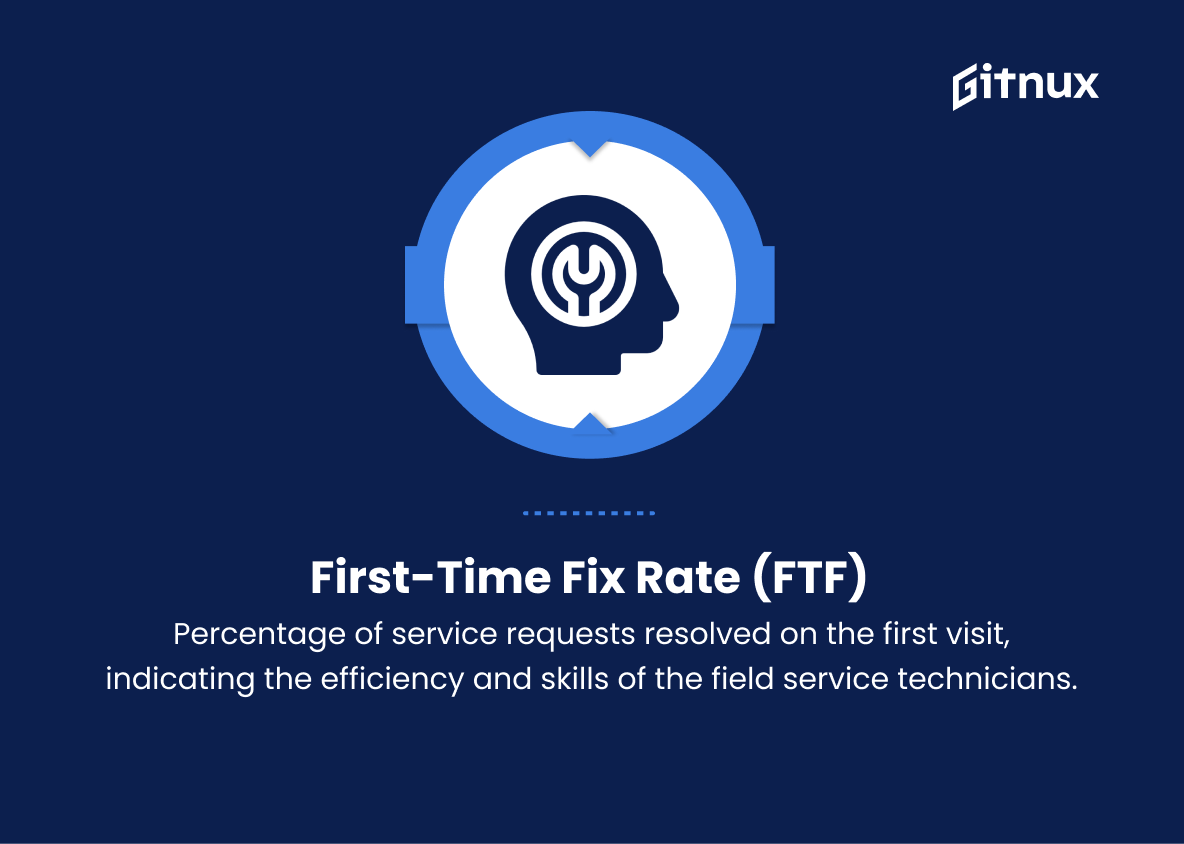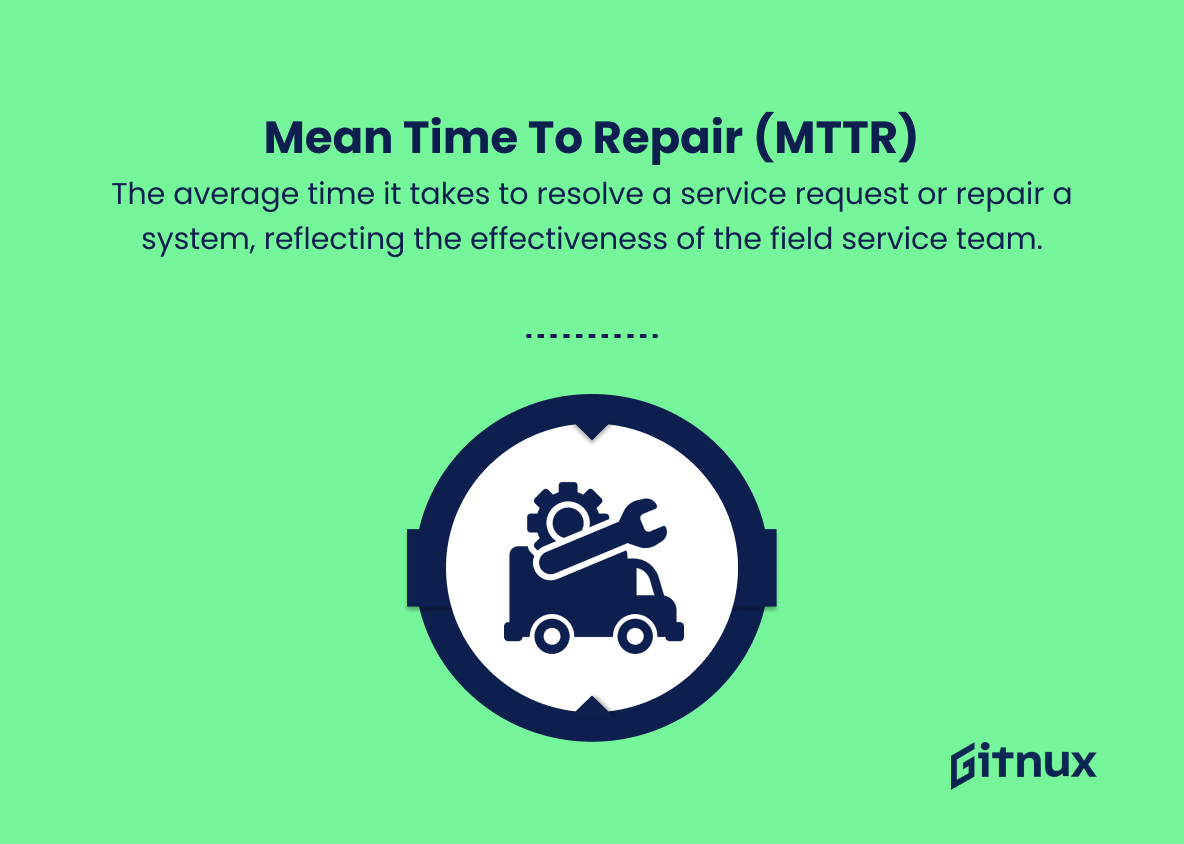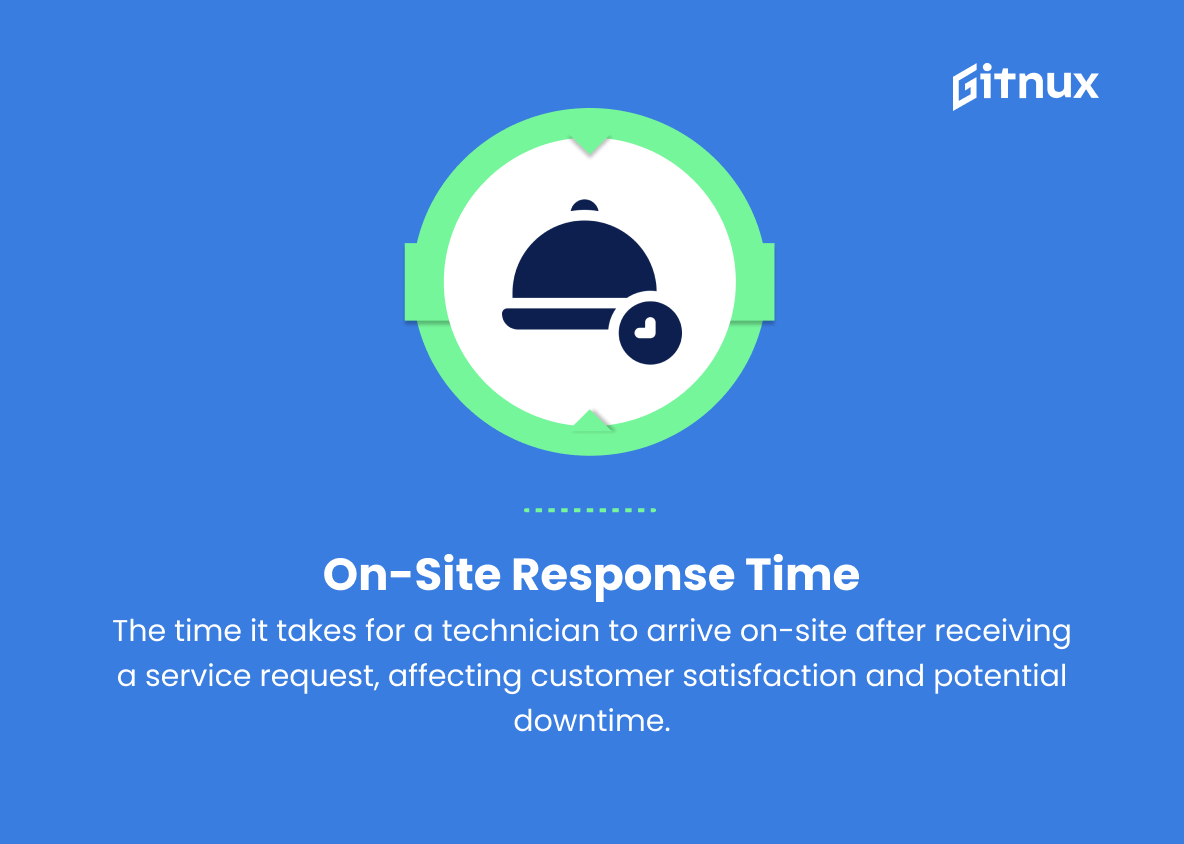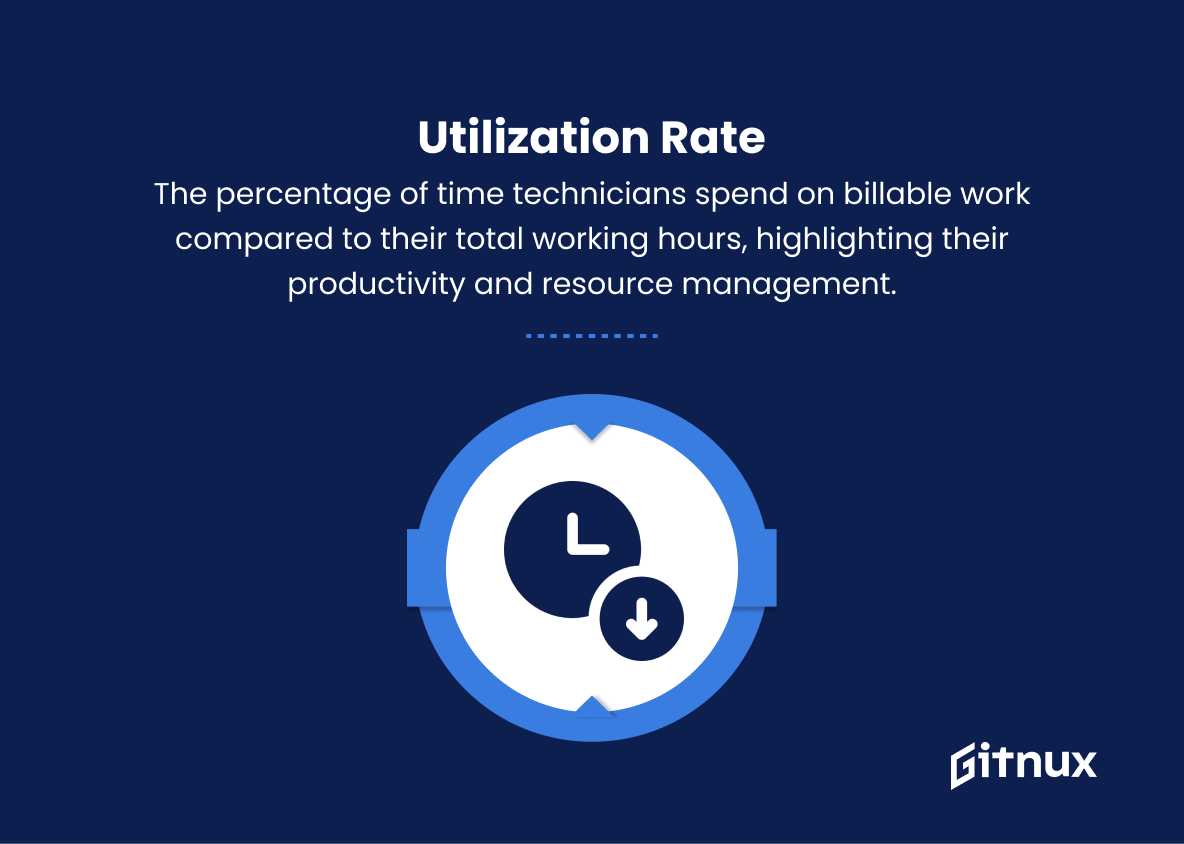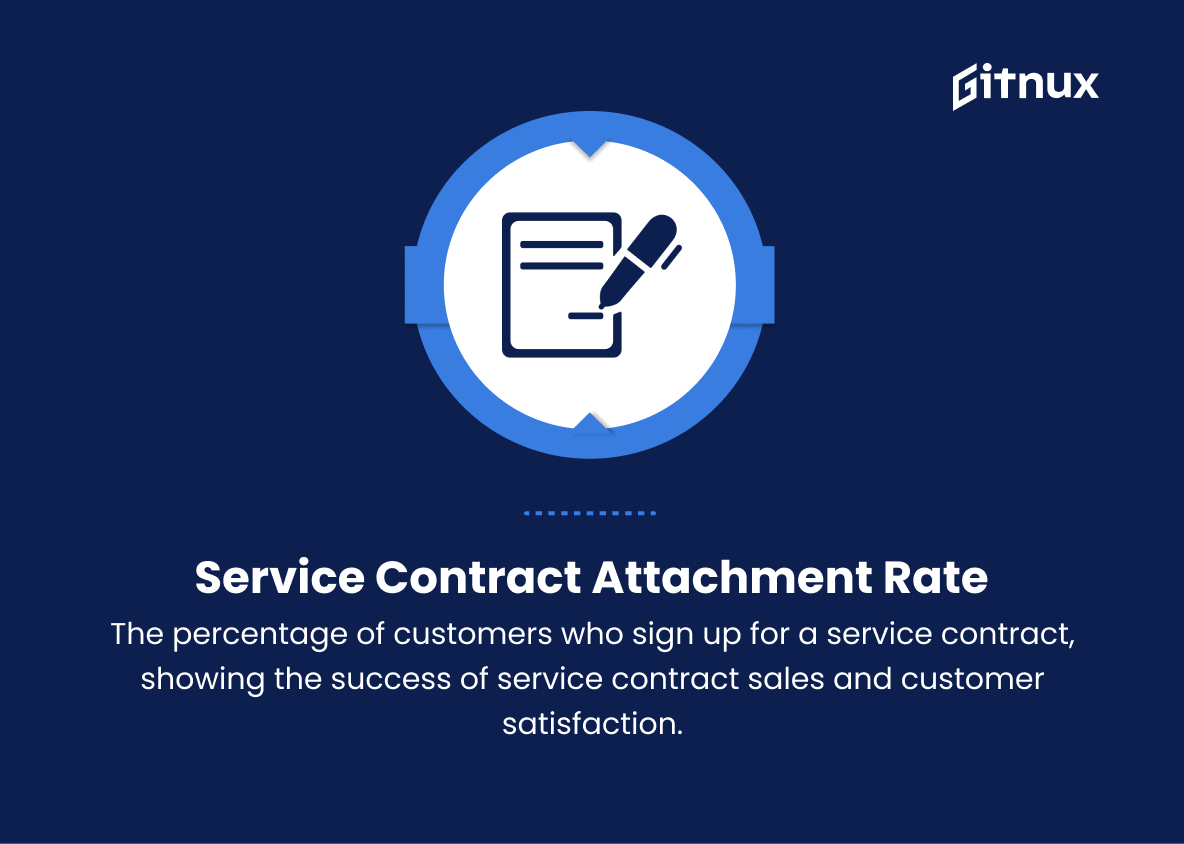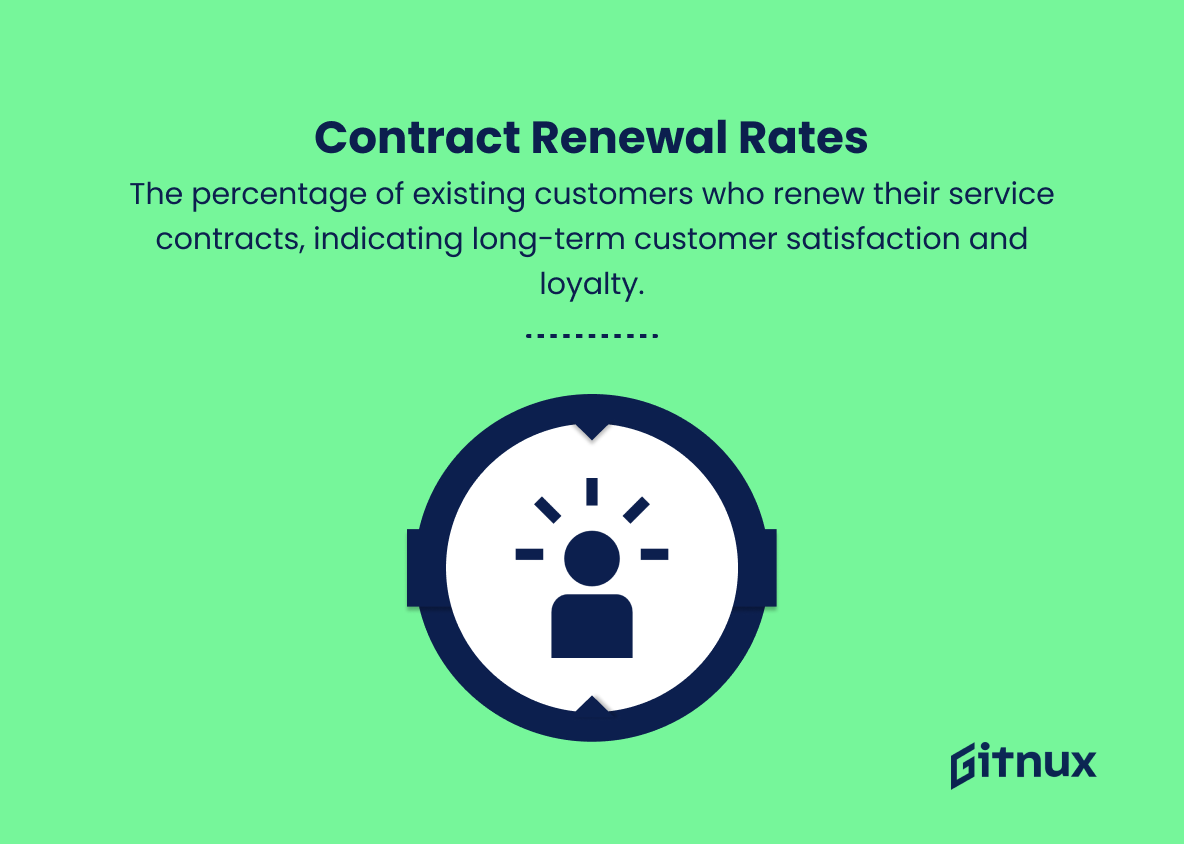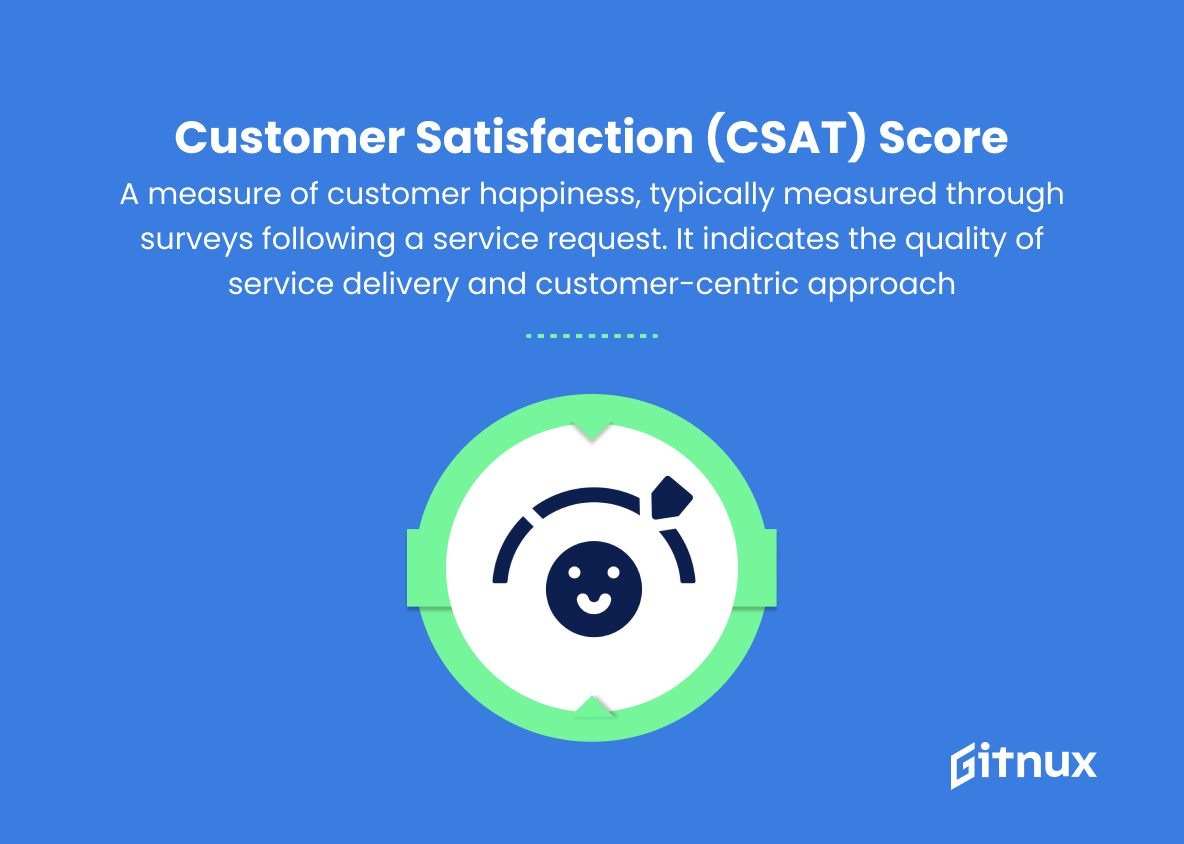In today’s fast-paced and increasingly competitive business landscape, effective management of field service operations is crucial for organizations to thrive and maintain a strong competitive edge. One of the key aspects in the pursuit of excellent service delivery and customer satisfaction is leveraging data-driven insights through field service metrics. This blog post delves into the intricacies of these performance indicators, shedding light on their importance, types, and best practices in measuring and analyzing them for the betterment of your organization. Join us as we dive deep into field service metrics, revealing the secrets to unlocking your company’s full potential and driving top-notch service excellence.
Field Service Metrics You Should Know
1. First-time fix rate (FTF): Percentage of service requests resolved on the first visit, indicating the efficiency and skills of the field service technicians.
2. Mean time to repair (MTTR): The average time it takes to resolve a service request or repair a system, reflecting the effectiveness of the field service team.
3. On-site response time: The time it takes for a technician to arrive on-site after receiving a service request, affecting customer satisfaction and potential downtime.
4. Utilization rate: The percentage of time technicians spend on billable work compared to their total working hours, highlighting their productivity and resource management.
5. Travel time per call: The average time a technician spends traveling to and from service calls, determining the efficiency of technician routing and scheduling.
6. Technician idle time: The time that technicians spend waiting, reflecting the quality of scheduling and resource planning.
7. Service contract attachment rate: The percentage of customers who sign up for a service contract, showing the success of service contract sales and customer satisfaction.
8. Contract renewal rates: The percentage of existing customers who renew their service contracts, indicating long-term customer satisfaction and loyalty.
9. Number of service calls per technician: The average number of service calls a technician completes in a given period, providing insights into workforce productivity and workload.
10. Parts usage per call: The average number of parts a technician uses per service call, offering insights into inventory management, part availability, and job complexity.
11. Preventive maintenance compliance rate: The percentage of planned preventive maintenance tasks completed on time, assessing the effectiveness of the preventive maintenance program.
12. Customer satisfaction (CSAT) score: A measure of customer happiness, typically measured through surveys following a service request. It indicates the quality of service delivery and customer-centric approach.
13. Net Promoter Score (NPS): A standardized metric that measures customer loyalty and the likelihood of customers referring others to the service, providing an overall snapshot of customer satisfaction and loyalty.
14. Technician training hours: The number of hours technicians spend on training, reflecting the organization’s commitment to developing skills and knowledge.
15. Technician certification levels: The percentage of technicians with various certification levels, indicating the overall capabilities and skillset of the field service workforce.
16. Cost per service call: The average cost incurred for each service call, encompassing variables such as technician wages, travel expenses, and inventory costs, showing the financial efficiency of field service operations.
17. Remote resolution rate: The percentage of service requests resolved remotely without the need for an on-site visit, demonstrating the effectiveness of remote troubleshooting and support.
18. SLA (Service Level Agreement) compliance rate: The percentage of service requests that meet the agreed-upon SLAs, reflecting the organization’s commitment to delivering consistent and high-quality service.
19. Field service capacity: The number of service calls that can be completed in a given period, highlighting the ability to manage and scale the workforce to meet service demands.
20. Field service revenue growth: The year-over-year increase in revenue generated from field service operations, illustrating the profitability and growth potential of the field service business segment.
Field Service Metrics Explained
Field service metrics are essential in evaluating the efficiency, effectiveness, and customer-centric focus of an organization’s field service operations. Metrics such as first-time fix rate (FTF), mean time to repair (MTTR), on-site response time, and utilization rate help assess the productivity, resource management, and skillset of the field service technicians. Simultaneously, travel time per call, technician idle time, service contract attachment rate, contract renewal rates, and the number of service calls per technician provide insights into technician routing, scheduling, and customer satisfaction. Parts usage per call, preventive maintenance compliance rate, customer satisfaction (CSAT) score, net promoter score (NPS), technician training hours, and certification levels further speak to inventory management, preventive maintenance effectiveness, and the organization’s commitment to developing its workforce. Cost per service call, remote resolution rate, SLA compliance rate, field service capacity, and revenue growth are key indicators of financial efficiency, remote troubleshooting capabilities, the ability to scale the workforce to meet service demands, and the overall growth potential of the field service business segment. Ultimately, these metrics help organizations make informed decisions for improving service delivery and achieving long-term success.
Conclusion
In summary, field service metrics play a critical role in measuring, understanding, and improving the overall performance of a field service business. By analyzing key categories, such as productivity, efficiency, customer satisfaction, and financial performance, managers can identify areas of strength and weakness while making informed decisions to drive continuous improvement. Ultimately, implementing the most relevant and impactful field service metrics will equip companies with the tools they need to stay competitive, increase profitability, and deliver exceptional service experiences to their customers. Stay proactive in monitoring and adapting the metrics that matter most to your organization, and witness the transformative effects on your field service operations.
